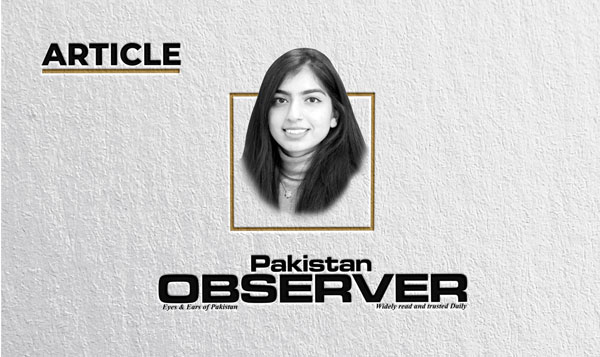1971 War: Separating facts and fabrications
AFTER fifty-one years of war of 1971, it remains as one of the most painful episodes in the history of Pakistan.
In India and Pakistan, the war is often remembered as the third Indo-Pakistan war. The conflict lasted for 9 months in escalated form. But the roots of this conflict can be traced back to 1947 independence of Pakistan.
West and East Pakistan (now Bangladesh) were two non-contiguous territories that shared a dominant religion of Islam but were very different in terms of language, ethnicity and culture.
Indian quest for hegemony and the urge for domination led them to intervene in Pakistan’s internal affairs.
Their burning desire to avenge the 1965 defeat led them prepare a proper plan of division. It included conventional attacks, terrorism, and propaganda in their neighbouring East Pakistan.
Some sources also refer to the 1971 as Indian-sponsored terrorism. On 7 March Sheikh Mujeeb’s supporters revolt against the govt.
According to an eye witness, within the hour there were slogans and processions, and shops, restaurants and cinemas owned by non-Bengali were being looted and burnt.
According to Sarmila Bose (an Indian-American journalist), “The rebel movement in East Pakistan led by Sheikh Mujeeb bore no resemblance to the path of non-violence advected by Gandhi”.
On the other hand, India initiated extreme propaganda to defame Pakistani institutions. Fabrication of truth by Indian Intelligence was evident, ultimately Pakistan had to bear the burden of allegations proving that history sides with the victor.
Accusations of horrifying cases of rape, murder, robberies and torcher were put on Pakistan’s security forces.
Sarmila Bose mentioned in her book, “Dead Reckoning; Memories of Bangladesh War” that one Pakistani officer and his men passed by a village where were only old people.
No one would speak when asked why but when a child cried the rest of the village was discovered hiding in bushes.
They were scared because they had been told that Pakistan army killed men, raped women and ate children.
Such brutal accusations and misleading, monstrous portrayal of armed forces was not only foolish but also speaks of the level of hatred Indians had for Pakistan.
Much of rape, murder, robberies and torcher of innocents had happened before 25 March 1971 and culprits of such incidents were Mukti Bahini forces and members of Awami League.
The instigators of violence here were none other than Indians. When Pakistani forces surrendered, an exaggerated figure of 93,000 Pakistani soldiers becoming POWs is often propagated.
However, was 34,000 in addition to 11,000 police, rangers, scouts and militias which makes a total figure of 45,000 according to General Amir Abdullah Khan Niazi.
He was commanding the Pakistani Eastern Command in East Pakistan during war and he signed the instrument of surrender.
Another myth circulating on the internet without any sources is the 3 million deaths of Bengalis during this war is a figure widely used by journalists and the academia without any verification.
Russian newspaper agency, ‘PRAVDA’ published a report quoting this figure. However, many intellectual scholars and journalist from foreign rejected the 3 million death figures in 1971.
The actual figure of deaths in 1971 war did not exceed a hundred thousand.
These myths have not only damaged the repute and image of Pakistan globally, but has also spawned anger within the Pakistanis themselves; however, the realities are undoubtedly different.
As far as socio-economic exploitation of East Pakistan is concerned; except Punjab (was developed even before 1947), the situation of all the other provinces of Pakistan was not very different than East Pakistan.
The issue of language also has a broader perspective; Urdu was not the language of any of the four regions of West Pakistan as well.
Bengali was a regional language, just like Punjabi, Sindhi, Pashto, Brahvi and Balochi etc. Urdu being the lingua franca, was a unifying factor for the Muslims of sub-continent which played a vital role in invigorating Pakistan Movement.
Hence it was selected as the national language of Pakistan. Indian intrusive role in war: There is no doubt in stating that India was central to the crisis and separation of former East Pakistan when Chanakya Kautilya’s philosophy came into full swing in 1971.
They targeted Pakistan with Kautilyan script by exploiting the internal situation in former East Pakistan and hiding the truth.
India had adopted a four-prong strategy towards East Pakistan; to exploit feelings of deprivation among East Pakistani masses, to create a situation for refugees and manipulate it, to provide arms to the rebels and to invade East Pakistan by violating the international border.
Indian government trained guerrillas, fanned disruptive activities, and fuelled riots to create such a situation that the people of East Pakistan got deceitfully convinced to demand separation from Pakistan.
Former Prime Minister Atal Bihari Vajpayee had played an active role in separating East Pakistan from Pakistan.
Narendra Modi openly admitted that he had gone to Delhi in 1971 to participate in the Satyagraha Movement launched by Jana Sangh as a volunteer to garner support for the Mukti Bahini soldiers.
This war highlighted the mistakes of our divided politicians, self-centred diplomats and media who could not point out the Indian propaganda for paving the basis of division.
Military’s role in a highly volatile region has to be assertive. The pattern remains the same even today as divided politicians, passive diplomatic corp and biased media has cost Pakistan its national interest on multiple occasions.
Objective journalism, unity amongst national stakeholders and active diplomacy are the required changes for Pakistan.
—The writer has remained associated with the Institute for Strategic Studies and ISPR.









